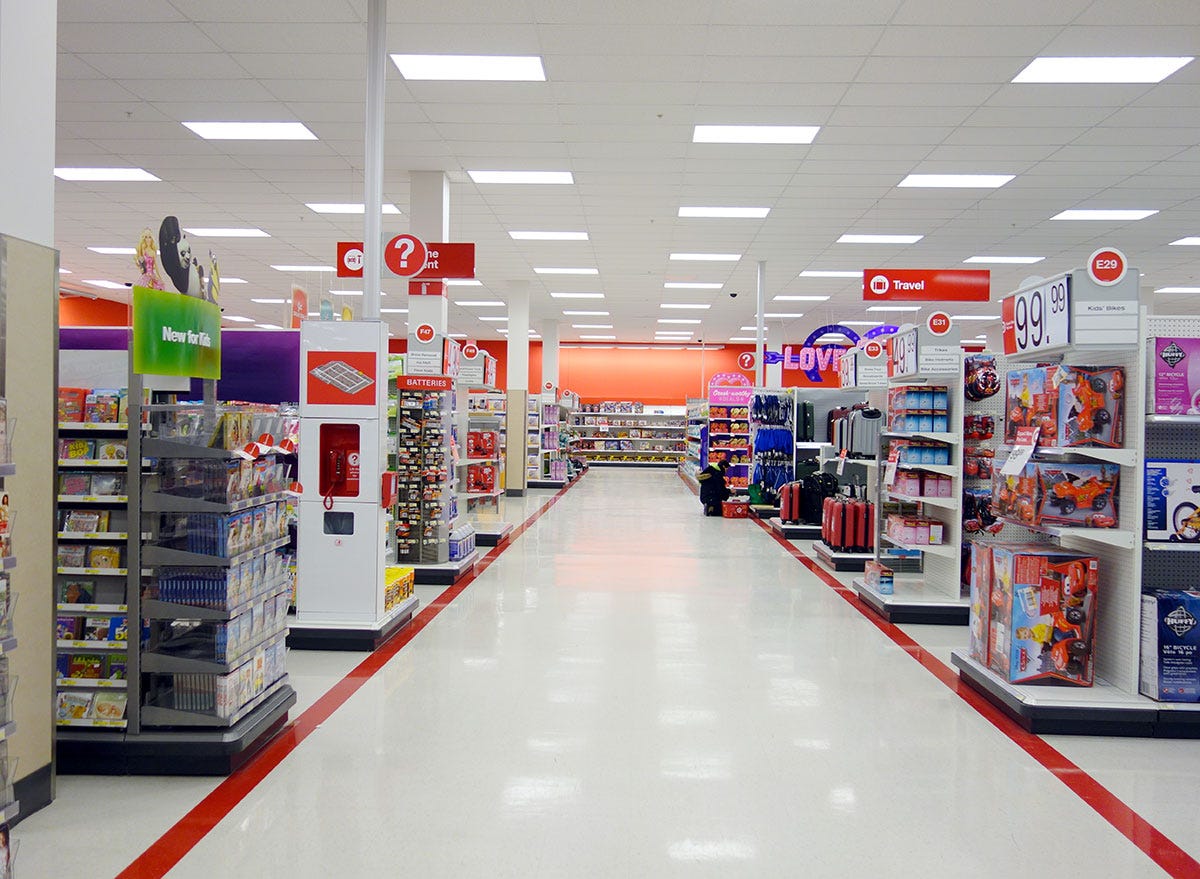The Target effect- how Target utilizes a psychological effect to drive sales
Many of you have heard the term “Target effect” many times. After all, it is a popular joke on the internet to walk into your local Target looking for shampoo and leave with a new sprinkler, phone, and a case of beer. This name created as a joke is Target’s business strategy, and most things associated with the business can be tied back to the Target effect.
(Although not every Target is shaped exactly like this, most of their locations roughly adhere to a similar shape.)
Upon entering Target, the first thing most people will notice is the café, often a Starbucks. The theory behind the café and why it is the first thing you will see is the idea that seeing a familiar site, like your favorite coffee shop, will make the customer feel more in their element, and therefore happier. Happy shoppers will stay longer at your store, and spend more. A large part of the Target effect is aimed at making their customers as happy as possible. Because of this, the primary purpose of the café isn’t to bring in money, it is to make the store feel more welcome
The second thing that you will notice when looking at the layout of the store is how it is arranged into 4 squares. Aside from making it easier for employees to restock and look visually appealing, the design also serves a hidden purpose. Because there are so few isles in the store, trying to reach any one particular item will force you to pass a large quantity of the available products, increasing the likelihood of impulse buying random products. For example, if you wanted to purchase groceries, to cover the whole grocery isle you would pass the following products:
Jewelry/Watches
Girls clothes
Cards
Pet care products
Cleaning supplies
School/office supplies
Small Electronics
Beauty products
Healthcare products
Kitchen products
Tableware
Home Storage
Picture frames
Seasonal products
Considering that this is assuming that you are only going to the store to purchase a single item, and how simple the layout is I find this level of product exposure very impressive. One other thing I think Target does to further improve this is by having everything not related to products, like the bathrooms and checkout at the registers, ensuring that any time spent in the product aisle will maximize the number of products you see.
Another thing Target is known for is its colors, the white with signature white accents give off a positive and clean feeling when walking around the store. All Target employees wear bright red shirts, making it convenient for customers to get help.
Overall, Target has been designed to keep customers happy and force them to pass a huge number of products for every item that they entered the store planning to get. However, since overspending at their locations is often seen as poor-self control on part of the customers and not manipulation by the company, Target doesn’t lose customers through their strategy. In fact, since Target’s strategy is aimed at making their customers happy, many will associate Target with a positive feeling, gaining loyal customers. Despite other companies employing similar strategies, Target is by far the most successful company to employ its strategy.
Thanks for reading! I know that I haven’t delved as much into the financial side of Target in this post, but considering that a lot of Big-box store companies sell very similar products the business strategies may be the primary difference between these companies. Because of this, sometimes I may split the analysis of a company into two posts so I can go more in-depth into different parts of the company.






